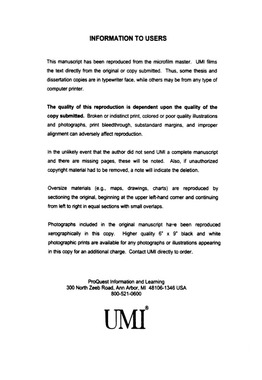| dc.contributor.advisor | Cifelli, Richard L., | en_US |
| dc.contributor.author | Smith, Kent S. | en_US |
| dc.date.accessioned | 2013-08-16T12:18:27Z | |
| dc.date.available | 2013-08-16T12:18:27Z | |
| dc.date.issued | 2002 | en_US |
| dc.identifier.uri | https://hdl.handle.net/11244/401 | |
| dc.description.abstract | Three new species of Leptodontomys (L. korthi n. sp., L. schnelli n. sp., and L. protistopikos n. sp.) are described based on a large sample (249 specimens) of maxillae, mandibles, incisors, and isolated upper and lower cheekteeth. In addition to the descriptions, 18 quantitative dental characters of the p4 for Leptodontomys were examined using principal components analysis, correspondence analysis, and cluster analysis. These analyses provided a reliable separation of species. | en_US |
| dc.description.abstract | The first Eastgate locality (UCMP V70138) was discovered by D. I. Axelrod in the late 1950s. Since the initial discovery of fossil vertebrates at Eastgate, researchers from the University of California at Berkeley (namely, D. E. Savage and J. H. Hutchison) and the University of Oklahoma have collected fossil remains from nearly 20 localities. Fossils were collected from within the volcanic tuffs that occur in the basalmost section of the Monarch Mill Formation. Screenwashing was limited to few localities. | en_US |
| dc.description.abstract | Phylogenetic relationships for Leptodontomys were examined and a phylogeny was constructed. This phylogeny is based on 74 characters of the maxillae, mandibles, and upper and lower cheekteeth of Leptodontomys . The phylogenetic analyses resulted in 14 most-parsimonious trees, indicating Leptodontomys as a monophyletic group. Phylogenetic analyses show two of the new species, L. schnelli n. sp. and L. protistopikos n. sp., form a trifurcation with L. stirtoni. The third new species, L. korthi, does the same with L. quartzi and L. russelli. | en_US |
| dc.description.abstract | The Eastgate local fauna, Churchill County, Nevada of Miocene (early Barstovian) age includes 25 families of mammals, as well as numerous fish, amphibians, reptiles, and birds. Sixty species of mammals including 18 insectivores, one chiropterian, seven lagomorphs, 33 rodents, five carnivores, three artiodactyls, and three perissodactyls are described for the Eastgate local fauna. A new species of insectivore, one genus, and nineteen species of rodents are described. | en_US |
| dc.format.extent | 2 v. : | en_US |
| dc.subject | Mammals, Fossil Nevada Churchill County. | en_US |
| dc.subject | Paleontology. | en_US |
| dc.subject | Fossils Classification. | en_US |
| dc.subject | Paleontology Nevada Churchill County. | en_US |
| dc.title | Mammalian paleontology of the Monarch Mill Formation at Eastgate, Churchill County, Nevada. | en_US |
| dc.type | Thesis | en_US |
| dc.thesis.degree | Ph.D. | en_US |
| dc.thesis.degreeDiscipline | Department of Biology | en_US |
| dc.note | Adviser: Richard L. Cifelli. | en_US |
| dc.note | Source: Dissertation Abstracts International, Volume: 62-12, Section: B, page: 5616. | en_US |
| ou.identifier | (UMI)AAI3034884 | en_US |
| ou.group | College of Arts and Sciences::Department of Biology | |
